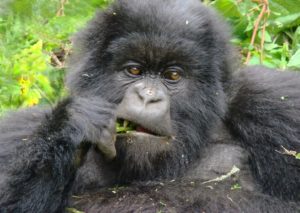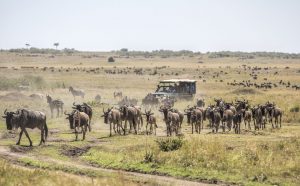The Little Five
Explore Nairobi & experience Kenya history & culture
The term little 5 was inspired by the marketing success of the big five which included the elephants, rhinos, lions, leopards and buffaloes for tourist safaris in Southern Africa and extended to Eastern and Western Africa thus inspiring nature conservationists to come up with the name little five for visitors to acknowledge and accept the less noticed game of the savanna woodlands which were called bush-veld in South Africa. The “little five” species are a contrast in terms of the big five and they include the;
Buffalo weaver
The buffalo weavers has two species which include red-billed buffalo weaver (Bubalornis niger) and white-billed buffalo weaver (Bubalornis albirostris) found in Tanzania, Uganda, Zambia, Angola, Kenya, Mozambique, Namibia, Rwanda, South Sudan, Zimbabwe, Botswana, Ethiopia, Swaziland, Somalia and South Africa and they prefer living in the dry savanna areas and woodlands with body length of about 24 cm and the weight of 65grams. The red-billed buffalo weaver and white-billed buffalo weaver can be separated by the color of their bills.
Leopard tortoise
The leopard tortoise (Stigmochelys pardalis) mainly exist across the arid and savanna regions of eastern and southern Africa and South Sudan occupying the savannas in both very hot and cold weather conditions and they sometimes dwell in abandoned fox, jackal, or aardvark holes. Surprisingly, leopard tortoises also make nests in to lay their eggs instead of digging holes on the ground and it is the 4th largest tortoise species in the world and the typical adults go up to 40 centimeters (16 in) and weighing 13 kilograms (29 lb).
Ant lion
There are an estimated 2,000 species of ant lion existing in several parts of the world especially in warmer areas forming a large percentage of the prey of insects, the suffix “lion” believed to be destroyer or hunter and the name “ant lion” means uncertain but it is commonly called a “doodlebug” in North America because of the odd winding, sprawling trails it leaves in the sand while relocating. The adult bears two pairs of long, narrow, multi-veined, translucent wings and a long, slender abdomen.
Rhino beetle
They are scientifically called dynastinae and are among the largest of beetles with length of up to 150 mm (6 in), considered completely harmless to humans because they cannot bite or sting. The body of an adult rhinoceros beetle is covered up by a thick exoskeleton and it bears a pair of thick wings, set of membranous wings underneath, allowing the rhinoceros beetle to fly, but inefficiently because of its body size.
Elephant Shrew
Elephant shrews are sometimes called jumping shrews or sengis commonest in the southern part of Africa especially in the Namib Desert to boulder-strewn outcrops, this creature is one of the fastest small mammals reaching up to speeds of 28.8 kilometres per hour (17.9 mph) and they so often feed on millipedes, spiders, insects, centipedes, and earthworms using their nose to find prey and the tongue to flick small food into its mouth just like the anteater. In 1997 the biologist Jonathan Kingdon suggested that they should instead be called “sengis” a word borrowed from the Bantu languages of Africa.
The Big Five might be the star attractions in Africa but never underestimate what impact the little five have on tourism.





